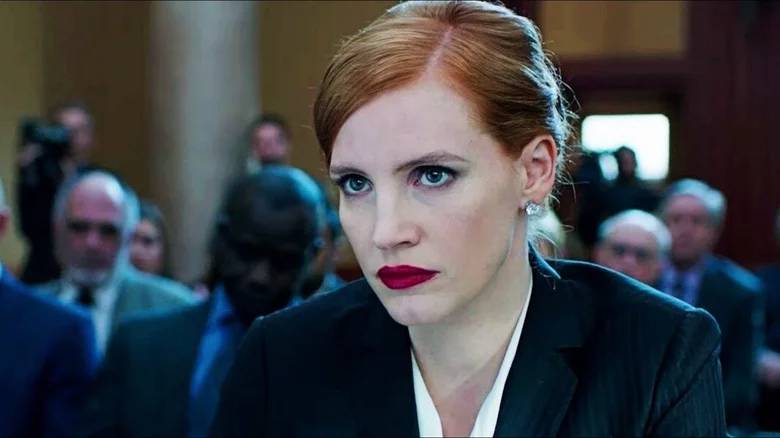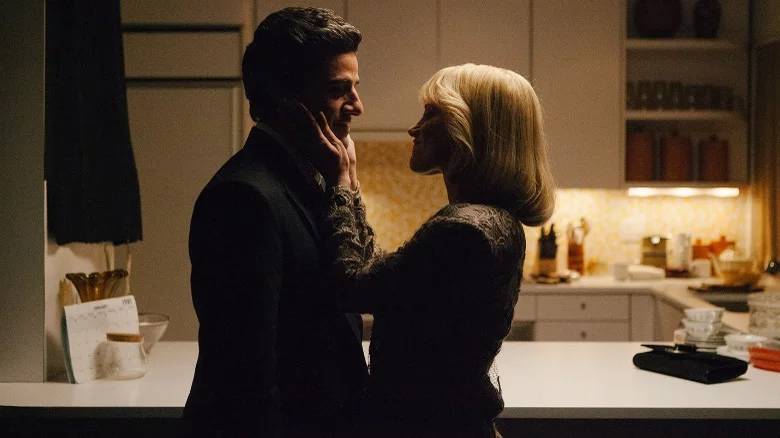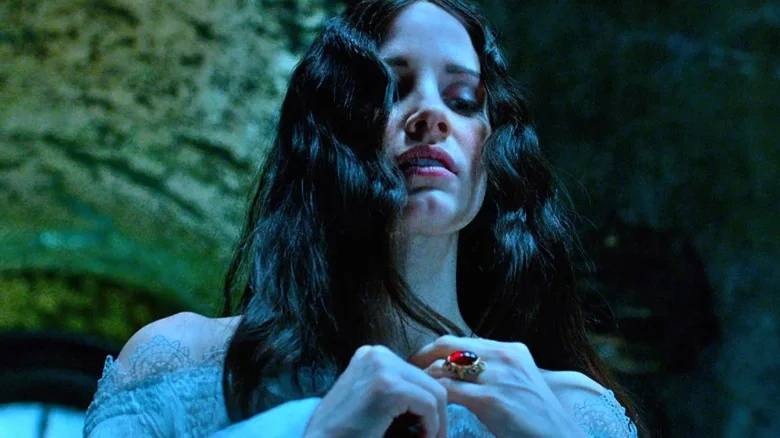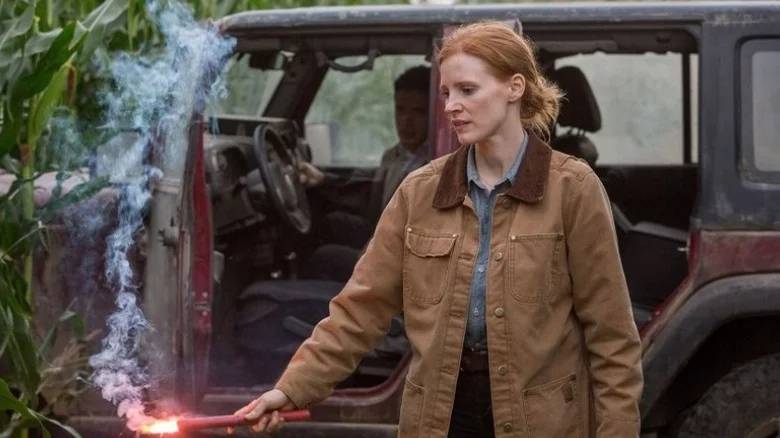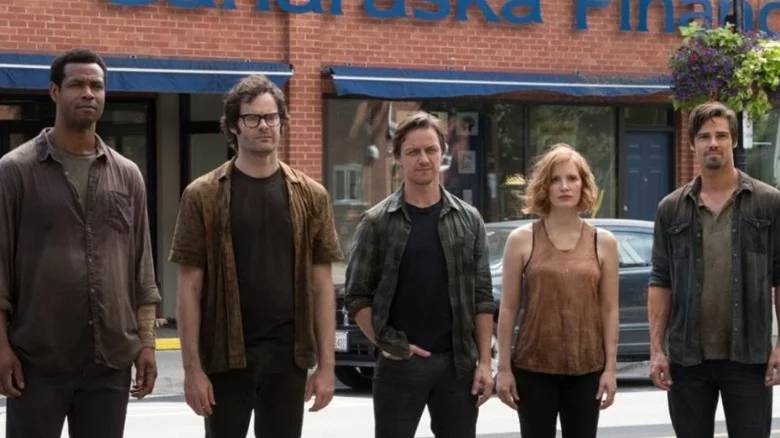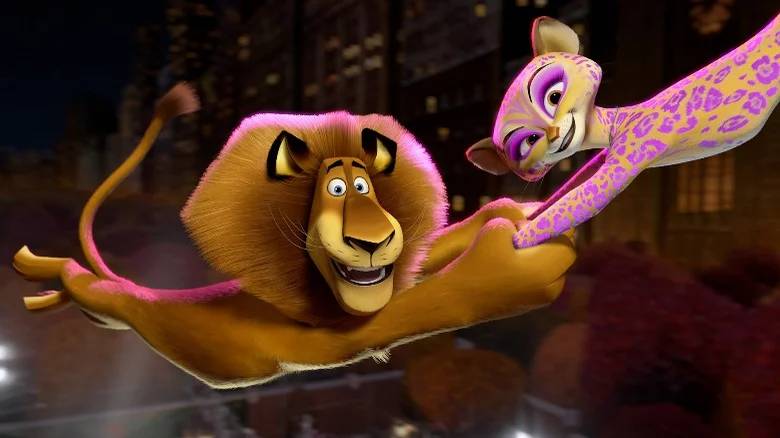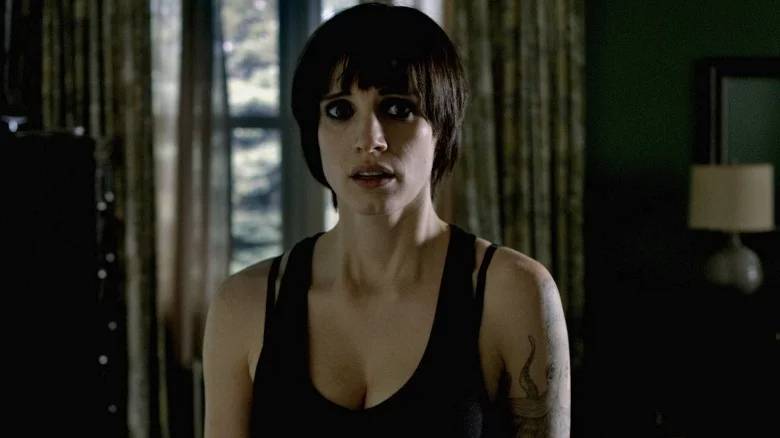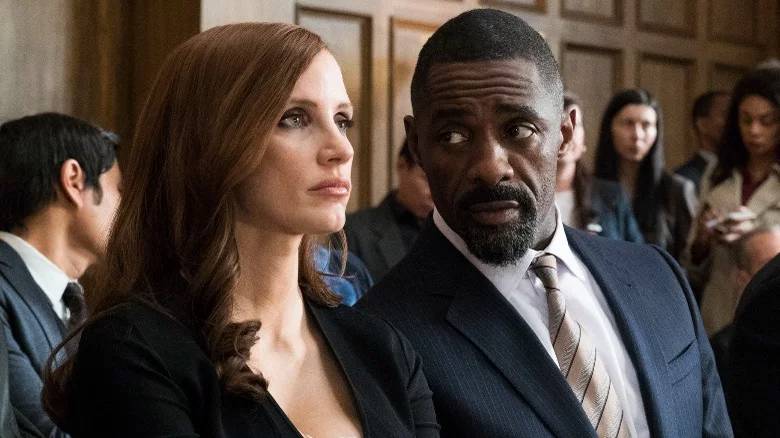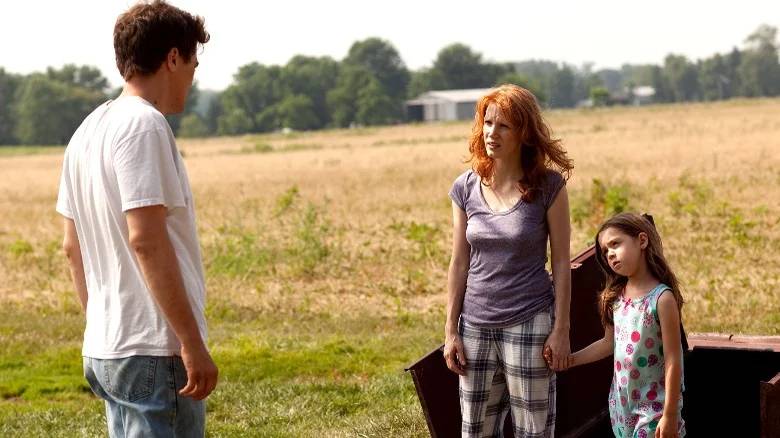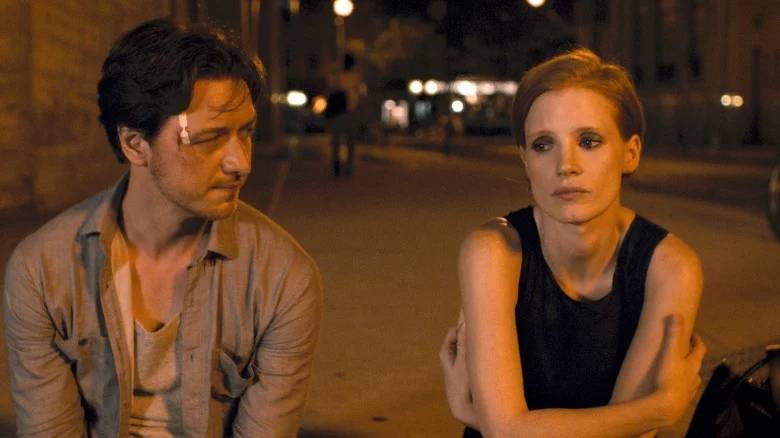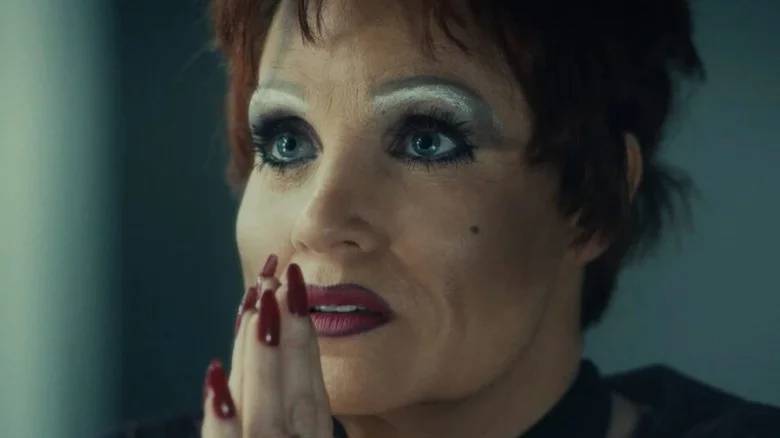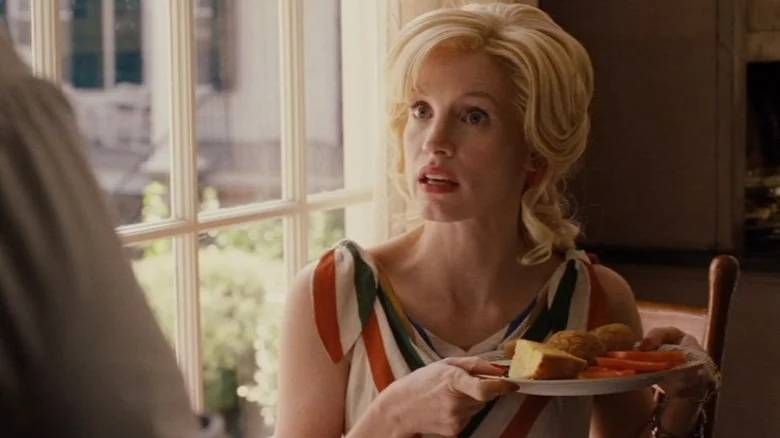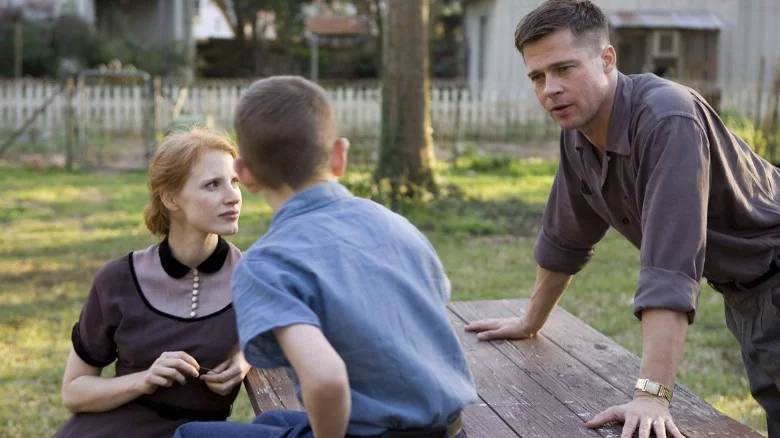Jessica Chastain has a lot of experience in the entertainment industry. She erupted into the scene in 2011 after a protracted wait for her big break, appearing in “Take Shelter,” “The Tree of Life,” and “The Help,” two of which were nominated for best picture that year. That year, Chastain also received her first Oscar nomination, which helped to establish her as a major star. Over the past ten years, Chastain has acted in a number of movies and has demonstrated a true talent for portraying complex, career-driven women. Chastain’s career has been centred on complex characters, and her preference for three-dimensional characters has given her the opportunity to collaborate with talented filmmakers like Terrence Malick, Christopher Nolan, and Kathryn Bigelow.
Chastain, a professional actor at the top of her game, took home the best actress Oscar for her portrayal in “The Eyes of Tammy Faye,” a pivotal role that amply demonstrates the actress’s unwavering devotion to her craft. We’ve dug into her filmography to find the best films she’s starred in as a tribute to her outstanding and varied career. The top 15 Jessica Chastain films are listed here, in order.
A Most Violent Year (2014)
“A Most Violent Year” is a sharp examination of an immigrant business owner set against the backdrop of the particularly stormy 1981 in New York City (thus the title). The oil heating business that Abel (Oscar Isaac) and his wife Anna (Jessica Chastain) run is moderately successful. They discover that their efforts to grow their firm are greeted with serious threats to their staff, and their drivers frequently face attacks while making deliveries or have their trucks seized in a brutally violent city. The tenacity of Abel and Anna’s rivals forces the couple to go to great lengths to safeguard both their family and their business.
Anna, who finally shows to be much more cruel than Abel is capable of being, is shown by Chastain with a searing wrath. Unfortunately, one of the biggest flaws in the movie is how little is revealed about Anna, who seems to exist only to push Abel farther into the shadows and encourage him. Abel’s character is really rich, thus it is distressing that Anna’s character hasn’t received the same attention. However, because to Bradford Young’s eye for detail, it’s a stunning film that more than justifies its terrible cynicism that permeates the entire thing.
Crimson Peak (2015)
Jessica Chastain has demonstrated her talent for horror in the films “Mama” and “It Chapter Two,” but she has especially enjoyed playing the good guy up against the bad guy. As Lucille Sharpe in Guillermo del Toro’s “Crimson Peak,” Chastain gets to play a delightfully evil part. The movie centres on American writing aspirant Edith (Mia Wasikowska). The mysterious Sir Thomas Sharpe (Tom Hiddleston), who whisks Edith away to England to live with Thomas and his sister Lucille, learns that she is falling for him. Since Edith is aware that nothing is as it seems, she is motivated to solve the secrets surrounding the Sharpe family.
The picture masterfully combines romance and horror, and it succeeds in part because of del Toro’s fantastic world-building. Full to the brim with eye-catching costumes, flawless set design, and magnificent practical effects, the film is amazing. Wait until you see the gorgeous yet decaying estate in “Crimson Peak” if you liked the house coming to life in “Encanto.” It’s fascinating to see a master filmmaker succeed in a field he adores, and “Crimson Peak” offers both a decadent love story and chills to the bones.
Interstellar (2014)
Humanity is in a grave situation as planet Earth becomes more and more uninhabitable. NASA physicist Professor Brand’s (Michael Caine) plan calls for sending the planet’s populace through a wormhole. There isn’t really any other choice, so this is undoubtedly a hazardous one. They must first send a trial crew through the entire planet, and that’s where Cooper (Matthew McConaughey) comes in. Cooper travels through the wormhole with a group of astronauts and scientists in an effort to locate a spot where people from Earth can live. The film covers a huge period of time and space. Murph, played by Jessica Chastain, is Cooper’s daughter and a NASA scientist who is motivated to carry on her father’s work and attempt to save civilization.
The great space exploration movies, especially “2001: A Space Odyssey” and “Solaris,” have influenced “Interstellar.” A little less explanation would undoubtedly improve Nolan’s movie so that viewers may concentrate more on the stunning visual brilliance. Having said that, Nolan’s magnificent epic is able to stand alone as an essential work of science fiction filmmaking, and it’s that unique kind of movie that makes you seriously reflect on how incredible being alive is.
It Chapter Two (2019)
In Andy Muschietti’s “It Chapter Two,” which takes place 27 years after the events of the original movie, The Losers Club gets back together. Bill Skarsgrd’s terrifyingly demonic clown Pennywise is back and ready to terrorise the sleepy Maine town of Derry. Mike (Isaiah Mustafa), the lone survivor in Derry, appeals to everyone to return and carry out the promise they made as children: to finally defeat Pennywise.
The movie has pacing issues (it runs for an astounding 169 minutes) and repetition issues because so many of the scenes are the same. “It Chapter Two” is able to properly deliver many of the scares that were missing from the previous movie thanks to a deliciously unhinged performance from Skarsgrd and some outstanding visual effects. There is still a lot to like in this movie despite the fact that it is bigger, bolder, stranger, and bloodier than the prior instalment. Jessica Chastain channels a lifetime of grief and torture into an emotionally compelling performance as the adult Beverly (Sophia Lillis in the original movie). Chastain underwent some difficult physical challenges while filming the movie, and she contributes to lifting “It Chapter Two” above its formulaic repetition.
Madagascar 3: Europe’s Most Wanted (2012)
The Squid and the Whale and Frances Ha are perhaps the first two films that come to mind when you think of Noah Baumbach. What you probably wouldn’t guess is that Baumbach actually penned the screenplay for “Madagascar 3: Europe’s Most Wanted,” the third and concluding instalment in the “Madagascar” trilogy. I mean, really! But it makes sense since “Europe’s Most Wanted” is a bright, perceptive, and pleasant trilogy finale.
Our cherished zoo animals are seen returning to Central Park in the third movie, but not before getting lost in Europe. After some comical mischief, an animal control officer (played by the ferociously committed Frances McDormand) is after them, so the group seeks safety in a travelling circus of animals. There, Ben Stiller’s character Alex falls in love with Gia, a fierce trapeze artist (Jessica Chastain). Was it really necessary to produce a second “Madagascar” movie? The answer is a startling and emphatic “yes,” as “Europe’s Most Wanted” is a vivid visual feast with fantastic new characters, as well as having a tonne of humour and charm.
Mama (2013)
In Andy Muschietti’s “Mama,” Annabel (Jessica Chastain), who had never imagined having children, is forced into an unexpected motherly role. With a ridiculous wig on, Chastain’s character is dating Jeffrey (Nicolaj Coster-Waldeau), whose nieces vanished five years before. After being located in appalling conditions in a secluded cabin, the children are eventually found and taken into Jeffrey and Annabel’s custody. While the couple tries to provide the two young girls with a regular upbringing, they exhibit unusual behaviour, such as making frequent references to a mysterious, unseen creature they call Mama.
Fans of Muschiett’s “It” movies will undoubtedly enjoy “Mama,” which employs many of the same strategies used in that Stephen King duology. Although there are several obvious logical gaps in the mythos around the Mama creature, the movie is drenched with atmosphere and offers enough of jump scares. It’s entertaining to watch Chastain take on such a unique role, and she nailed the gothic rocker look admirably.
Miss Sloane (2016)
Jessica Chastain faces out against a particularly formidable foe in the US government in John Madden’s “Miss Sloane.” Chastain portrays the titular Sloane, a senior executive of a renowned lobbying firm. Sloane is completely dedicated to her work, has no discernible personal life, and spends every waking hour advancing her career. She knowingly breaks the law and violates morality to further her career and that of her firm. Sloane unexpectedly agrees when a small ethical lobbying firm asks her to work for them in the campaign for gun control regulations, forcing her to square off against her former employer. It’s not a piece of news her former employers take lightly, and as Sloane’s campaign picks up steam, they go into overdrive to bring her down, even staging a personal hearing in front of the US Senate.
In 2016, “Miss Sloane” was released with little hype and only made a pitiful $9 million at the global box office. It’s a real shame that the movie didn’t garner more recognition because it’s a very clever and thoroughly enjoyable courtroom drama. When you learn that Jonathan Perera’s intricate but understandable script isn’t based on a true tale, you’re taken aback by the level of attention to detail that went into it. Then there is Chastain’s outstanding and fully dedicated performance. Her fierce yet sensitive presence permeates the entire movie, and she is brilliantly portrayed as someone who will stop at nothing to win.
Molly’s Game (2017)
The fast-paced walk and speak scenes that Aaron Sorkin is known for have been ridiculed, yet when it works, no one can write more captivating stories than Sorkin. He has had less success as a director, directing “The Trial of the Chicago 7,” a forgettable film, and “Being the Ricardos,” an odd and imbalanced film. It hasn’t always been disappointing: In his superb directorial debut, “Molly’s Game,” Sorkin’s greatest qualities all came together. Despite having a lengthy 140-minute running time, Sorkin’s script moves at such a rapid pace and has such a deep understanding of its topic that the time flies by.
A former Olympic skier turned high-stakes poker game runner, Molly Bloom is portrayed by Jessica Chastain. Her patrons included big-name celebrities and mafia figures. Bloom enjoys quite the ascent, but she soon becomes the subject of an FBI investigation. In order to avoid what is sure to be a prison sentence, Bloom will require the assistance of attorney Charlie Jaffey (Idris Elba). It sounds crazy, and it gets even crazier because “Molly’s Game” is based on the memoir of the same name written by Molly Bloom in real life. Few actors can play hyper serious, incredibly driven career women with the fervour she can; the movie depends on Chastain’s steely performance to move things along.
Take Shelter (2011)
The end of the world as we know it is here, but is it really? Curtis (Michael Shannon) frequently has dreams about the end of the world. He is constantly plagued by terrifying hallucinations while awake, making it impossible for him to even be at ease in consciousness. Curtis chooses to keep it all to himself despite the detrimental effects it has on his health in an effort to protect his wife Samantha (Jessica Chastain) and their daughter Hannah (Tova Stewart). As Curtis’ inner problems become more difficult to conceal, he starts to construct a storm shelter in their backyard.
A mesmerising slow burn about the dangers of mental illness and masculinity, “Take Shelter” is captivating. The refuge Curtis is trying to construct completely consumes him and threatens to topple the solid foundations he’s worked so hard to establish. In this understated yet deep part as a man whose life is eroding slowly—or does he simply see something that no one else can—Shannon is revelatory. As a wife with a strong moral compass who is trying to maintain her family’s unity despite it being more and more impossible to do so, Chastain is the ideal counterpoint to Shannon. The fascinating spell produced by Jeff Nichols’ film ensures that “Take Shelter” will stay with you for a very long time.
The Disappearance of Eleanor Rigby: Them (2014)
Ned Benson made not one, not two, but three movies for his directing debut. Benson created three versions of “The Disappearance of Eleanor Rigby,” a play about a couple grieving the death of their child: While “Them” combines their two points of view, “Him” tells the tale from Conor’s (James McAvoy) perspective while “Her” focuses on Eleanor. You may be excused for assuming that the movie is truly about The Beatles, but the only time they are mentioned in the whole thing is when Eleanor’s parents give her the name she has because they met at a rooftop concert they had imagined would happen in the future.
Eleanor’s parents are portrayed by William Hurt and Isabelle Huppert, while Eleanor’s professor is played by Viola Davis, and Bill Hader consistently steals the show as Conor’s coworker. Conor and Eleanor’s emotions are effectively conveyed in Benson’s elliptical film, which chooses to emphasise a sequence of individual moments rather than a straight narrative. However, the tale is less successfully told as a result. Even yet, Chastain is remarkable as the annoying Eleanor, deftly juggling a hard, closed-off appearance with a terribly damaged person who is urgently trying to restore their identity.
The Eyes of Tammy Faye (2021)
“The Eyes of Tammy Faye,” the movie that earned Jessica Chastain a coveted Oscar (and allowed her to give a really lovely speech), shows the actress going through a significant shift (thanks to some Oscar-winning hair and makeup). Chastain plays Tammy Faye Bakker, a teleevangelist who, along with her husband Jim (Andrew Garfield), amassed a vast empire of opulent homes and clothing while dominating the airwaves with their preaching. A spectacular ascension is followed by a crushing fall, and the movie depicts both of these events.
There’s no doubting that Tammy Faye is significant to many LGBT+ individuals since she advocated for love and acceptance of people with AIDS while some around her advocated for the reverse. Nevertheless, the movie portrays Tammy Faye as totally innocent and downplays the fact that she was a key player in defrauding her followers of millions of dollars while padding her own bank account. That isn’t the fault of Chastain’s performance, which is good overall and effective, committed, and confusing, but the narrative. The reason this movie was done at all is a little puzzling considering how much it draws from the documentary of the same name from 2000. “The Eyes of Tammy Faye” has the air of a movie made to highlight a great actress, and in that sense, it succeeds, but it can’t help but seem a little hollow.
The Help (2011)
Jessica Chastain’s first and best work with director Tate Taylor was on “The Help” (the second, “Ava,” is an unfortunate dud). The movie centres on Skeeter (Emma Stone), an African American maid who chooses to write a book on her experiences in the 1960s after returning to her birthplace of Jackson, Mississippi. The turn? Their perspectives will be used to tell the story. Chastain plays Celia, a woman who hides her extreme anguish behind a positive outlook, in a significant supporting role. Chastain shines in the movie, which earned her first-ever Oscar nomination.
Although it’s not a poorly constructed movie, it is syrupy and makes the unfortunate choice to support a white saviour narrative. The central narrative of “The Help” centres on the lives of two of the Jacksonian servants, Aibileen (Viola Davis) and Minny (Octavia Spencer). Instead, it examines their lives through Skeeter’s eyes (and writing), a white lady who aspires to change the world. The cliché of viewing the lives of people of colour via a white lens is worn out and unsatisfying, and “The Help” strongly relies on it. The Help is an entertaining movie with an intriguing story thanks to a strong cast that includes many Oscar winners. However, the movie could have had a much bigger impact if it had shown more interest in the lives of Aibileen and Minny.
The Martian (2015)
In the breathtaking science fiction film “The Martian,” played by Matt Damon, he strives to live on Mars for years on his own while sciencing “the sh*t out of this.” He’ll need to raise his own vegetables because his food supplies will only last a few months at most and the environment makes it notoriously difficult to grow any. Leading NASA researchers, including mission commander and geologist Melissa Lewis, are meanwhile working to find a way to return the trapped astronaut to the planet.
Despite being a sci-fi masterpiece, “The Martian” doesn’t truly feel like a Jessica Chastain movie because Damon is by far the most prominent character. That makes great sense given that the movie is primarily about Damon’s character being actually abandoned in space. Although the cast is consistently great throughout the movie, you could almost be excused for not remembering Chastain (or indeed anyone else) is in it. It’s worth seeing “The Martian” again if you forgot how powerful a presence Chastain is in the movie because she is excellent in a part that she has gotten better at playing over the years: a ferociously driven, results-oriented woman.
The Tree of Life (2011)
Terrence Malick’s extraterrestrial masterpiece “The Tree of Life” filters a father-son relationship through the narrative of the existence of the entire universe, making it more of an emotional buffet than a conventional movie. The emotional impact takes over when the plot becomes too elliptical in “The Tree of Life,” despite its size, complexity, and occasionally lack of logic. Jessica Chastain described the movie as more of a “visual poem” in an interview for the wonderful Criterion blu-ray, and she’s spot-on. The movie is, by a wide margin, the most sensitive to feeling and emotion.
The most of the story is set in 1950s Texas, but there is a lengthy scene that covers the entire history of the world’s creation, one of the most breathtaking sights you’ll ever see. Yes, dinosaurs are included in it. Very little conversation is used in the movie to communicate its story; instead, it mostly uses close-ups and visually arresting compositions to evoke emotion. Chastain is the ideal Malick muse because of her powerful performance, which makes the most of her sparse dialogue and conveys all the information we want through her body language and facial expressions. The movie “The Tree of Life” is amazing, dull, gorgeous, and tiresome. Life itself.
Zero Dark Thirty (2012)
In “Zero Dark Thirty,” a brilliant filmmaker and a master actress collide. The director of “The Hurt Locker,” who won an Oscar for her work, Kathryn Bigelow, followed up her success with “Zero Dark Thirty,” working once more with screenwriter Mark Boal. In the wake of the 9/11 terrorist attacks, Maya leads a multi-year quest to find Osama bin Laden, who is the subject of the movie. The very intricate manhunt for the Al-Qaeda commander culminates in a masterful sequence that depicts the invasion of a compound. The breathless and realistic scene lasts for more than 30 minutes and serves as a stark reminder that few directors are as adept at handling action as Bigelow.
In addition to being Chastain’s best movie, “Zero Dark Thirty” also served as a model for the type of persona she would later take on. The heartbreaking conclusion demonstrates how deeply committed Maya is to her work and how she has nothing else on her mind. Similar roles were performed by her in the films “Miss Sloane,” “Molly’s Game,” and “Ava.” She can still play other parts, though. She has demonstrated her versatility in movies like “Crimson Peak,” “Mama,” and “The Disappearance of Eleanor Rigby,” but “Zero Dark Thirty” allows Chastain the chance to play a particularly fierce character who rules a room with her words and presence. Even though Chastain won an Oscar now, which is a relief, “Zero Dark Thirty” is unquestionably the movie for which she truly deserves it.

